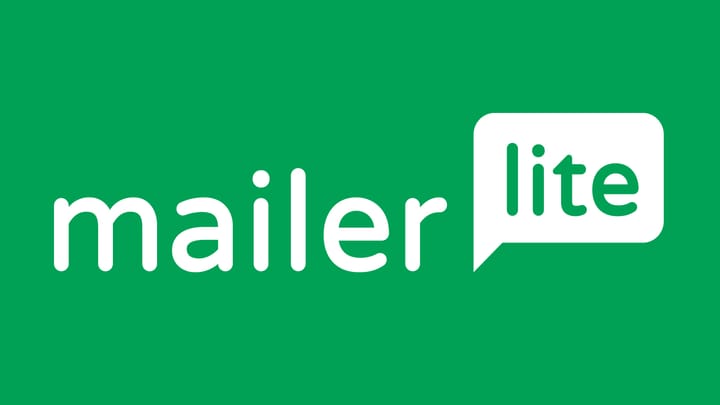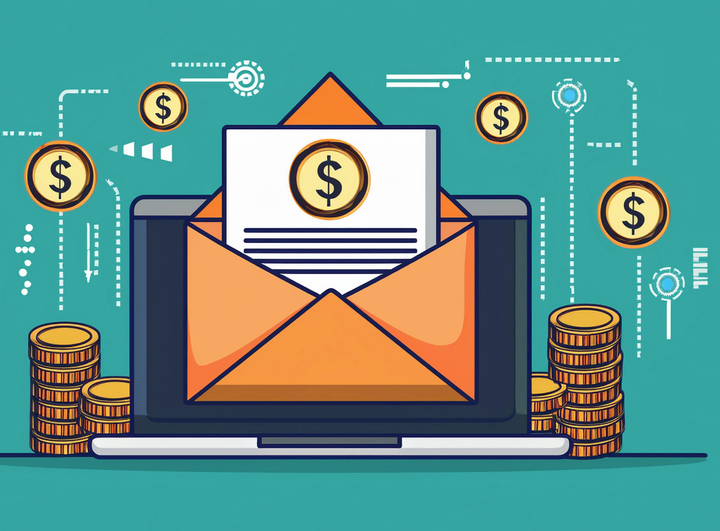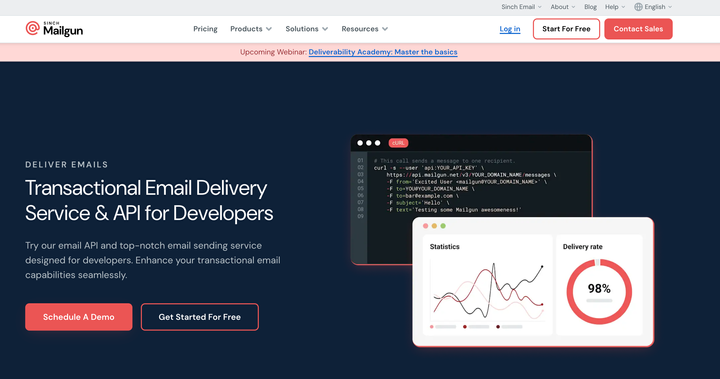Guide to IP Warming - Improve Email Deliverability and ROI Using These Tips
Email deliverability depends on IP reputation. Use IP warming by gradually increasing email volumes to ensure your messages reach customers and boost engagement.

As a business owner, you’re likely well-versed in the power of email marketing. It's a tool that allows you to showcase your products, services, and unique marketing efforts to your customers. But what if your carefully crafted emails never reach your customers’ inboxes? This is a common and frustrating issue in email marketing that every business owner should be aware of.
Email deliverability is an important marketing metric, and it suffers if your emails are blocked or redirected to spam folders. It’s primarily a function of IP address reputation, which tracks and measures the behavioral quality of the IP address and checks how many unwanted requests it sends.
The IP gets a positive reputation by sending out spam-free and authentic messages. However, it gets a negative score if it is associated with malware, bulk spam, and dangerous domains. Most business owners today sign up for a dedicated IP address since it instantly gets a reputation score, thus improving email deliverability.
Think of your IP address as your credit score, which you must build and maintain. It can be frustrating to repair a poor score when it gets damaged. The same goes for emails and your IP reputation—you’ll need to work hard to build your IP reputation to send emails efficiently. One approach is IP warming, a slow yet effective process of creating your reputation, thus boosting email deliverability.
What is domain and IP warming?
Using a new IP address for your business and sending emails is like applying for a loan— there’s no record, and you bring unknown risks. As a business owner, it’s your job to prove that you’re a serious marketer with the customers’ welfare in mind.
Once you have completed your email configuration, it’s crucial to slowly ‘warm’ your IP address or even dedicated IP to ensure successful email delivery and to avoid being blocked by ISPs.
When you send emails, ISPs monitor the type of traffic and assess whether it's spam or legitimate. Sending large volumes of emails is a red flag for most ISPs, and if it happens, the company may immediately block the account.
Also, ISPs may consider hard bounces, spam complaints, and trap hits that result in these email deliveries. In short, in an IP warm up, you aim to build your IP’s reputation through effective email delivery.
Effective IP warming involves a slow but methodical process of sending a small number of emails and gradually increasing the bulk. An IP warm up schedule aims to build at least 30 days of email sending history and data so that the local ISPs will become familiar with the stream of emails from your new IP address. The typical IP warm up schedule lasts 30 days and can be short for some users.
The length of IP warming depends on several factors, including your list size and quality and subscriber engagement. As you can see, you must pay attention to the content of your email to ensure a better engagement and response rate.
Key factors that affect your IP warming schedule
In addition to the length of the IP warming schedule, businesses aim for a positive IP reputation score. The key factors influencing your future IP reputation score are bounces, complaints, volume and consistency, spam traps, and engagement.
- Bounces. Reports of hard bounces reflect deliverability issues. If there are reported bounces, there are plenty of old email addresses, or some users did not opt-in to receive these emails.
- Volume and consistency. ISP filters are designed to automatically track any unusual activity to protect their clients from spam. Often, companies flag IP addresses with irregular email volume patterns over time.
- Spam traps. Spam trap hits also affect email deliverability. As such, in your IP warming schedule, you’ll need to monitor your subscriber list and remove subscribers who are inactive or have clicked emails within the past 12 months.
- Recipient engagement. The way your customers respond to your emails can impact your IP reputation. For example, you’ll get a negative engagement quotient if you’re reported as spam or when they ignore, delete, and mark your messages as read (even if they haven’t opened their email!). So, the challenge for business owners is to engage customers positively— they must click links, add the address to contacts, or simply open and scroll through the message.
IP warming guidance - A few suggestions to get started
On the surface, implementing an IP warming schedule seems easy. Prepare your mailing list, automate the delivery schedule, and hope that your recipients take notice and engage positively. But in real life, an IP warming activity takes a lot of work since you’ll consider the email content, quality, and timing.
If this is your first time implementing an IP warm-up schedule, we recommend initially focusing on sending emails to our most active and engaged subscribers.
Here’s a sample IP warming schedule that you can follow:
* Sending over 2 million emails in a single IP daily may result in deferrals or delays imposed by mail servers. If your business requires a bigger volume, adding more dedicated IPs is best.
A single IP address starts to see deferrals (delays imposed by the receiving mail servers) when sending over 2M daily emails. To accommodate your sending volume, you can purchase more dedicated IPs from your account executive. Double the volumes in the table for each additional IP in your account.
The table above is just a sample illustration of how you can go about with your IP warming schedule. Of course, you can always adjust the number of emails per day, depending on the capacity, size of the list, and nature of business. For example, if you’re running a small business, on the first day, you can start with 200 emails max, then move to 500 emails, and on the third day, you can ramp it up to 1,000. The idea here is to slowly send out emails, and gradually increasing it.
The initial sends, at least for the first 30 days, serve as the basis for the ISPs to determine your IP’s reputation. By initially sending your emails to your most active subscribers, there’s a big chance that you’ll get more opens and clicks, thus boosting your positive metrics.
It’s also important to pay attention to the timing of your email sent during this time. The key here is to send a limited number of messages per IP daily. We recommend adjusting your current sending practices as part of your IP warming program.
Automate the IP warming process for dedicated IP users
Business owners who sign up for a dedicated IP may rely on the dedicated IP warm-up service. This tool automates the warming process and lets you focus on the other essential aspects of your small business. To use the service, just find this option as the ‘Schedule Campaign’ (or Setup step) when generating a new email campaign.
Once you select this option, you’ll be asked to indicate the number of daily emails you want to send and the desired increase in daily emails. For example, if you’re running a small business, you can set it to 3,000 emails daily and increase it by 15% daily.
If you’re a beginner, you may want to consider these tips below to achieve the recommended volume targets:
- On the first three weeks of your IP warming schedule, focus on new subscribers with an open or click in the last 30 days;
- In the fourth week, expand your reach to subscribers with engagement in the previous 60 days;
- Next, you can add active or engaged subscribers in the last 60 months;
- You can also split large and non-time-sensitive emails over different days and;
- Always create non-time-sensitive email campaigns, like surveys.
Your goal in the IP warming process is to send emails to subscribers who are least likely to complain, send your emails to spam, or bounce. In short, you must include those who have opted to open the emails inconsistently and respond.
Important notes:
We have listed a few tested ways and tips for warming your email address. Failure to follow and implement IP warming can result in sub-optimal delivery and other problems, like bulk folder placement, deferrals, and blocking of email messages.
But remember, strictly following the IP warming guidance indicated on this blog only mitigates but will not eliminate deliverability risks. But as they say, it’s always better to have a plan, like IP warming, instead of simply sending emails in the hope that all these are successfully landed in the customers’ inboxes and they’re read.
It’s time to maintain your IP reputation
Once you strictly follow the recommendations, you can quickly boost your ISP reputation, thus improving your email deliverability. But being recognized by your ISP and getting a positive score is winning just half the battle in effective email marketing.
After warming up your IP, your next challenge is maintaining your IP reputation and ensuring that emails are delivered consistently.
So, how do you maintain your IP reputation and consistently deliver emails on time?
Once you have established your reputation and typical traffic patterns, the next step is to send similar volumes of emails to your subscriber base consistently and not surprise them with unexpected content once you have completed your IP warming schedule, consistency critically.
Now, if you stop sending emails for an extended period, like over a week, you need to scale back your email volume and then return to the same volume. If you stop sending for at least a month, you must restart your IP warming using the same steps to slowly build volume consistently over time.
Stay away from spam traps
We’ve already mentioned the danger associated with spam traps. Spam traps can also impact your IP reputation score and affect deliverability. The most common examples of these spam traps are honeypots or addresses explicitly created to trick spammers, recycled spam traps, or emails re-used after a year of inactivity. The presence of honeypots suggests that you have problems in the opt-in process, or your list may contain paid subscriber data.
If you think you have ‘honeypots,’ we recommend reviewing and cleansing your list and sticking first with subscribers with whom you have engaged in the last six months. If you think that your subscribers’ list has honeypots, or you’re slowly building your list, check out the following list tips and suggestions below:
- Never buy or rent lists;
- Always review the performance of your email marketing, removing hard bounces from your campaigns;
- Always re-engage the inactive subscribers. If there’s still no engagement after three months, consider it as ‘uninterested,’ which makes it difficult for you to win it back. If there’s still no engagement after making an effort, consider dropping it from the email list before the six months;
- Unengaged subscribers should be removed from the mailing list.
Ask permission- It’s time to grow your list
The challenge is managing your subscribers’ list to deliver better engagement, which helps build your IP reputation score in the long term. As such, an effective strategy is handy in inviting potential customers to opt in and receive these marketing emails.
An explicit opt-in is a golden opportunity for all small business owners, which means that the customer tells you directly that they’re interested in being part of the list and are willing to receive emails. Explicit consent comes in many forms, and here are some of the common scenarios that you may want to target soon:
- Readers or site visitors who submitted a form on your website;
- Customers who completed a purchase or availed of a service in the last six months;
- Contacts who entered into an agreement with the company in the previous six months;
- Contacts have worked with or have volunteered with the company;
- Contacts and readers who have filled up the signup sheet for the newsletter and;
- Contacts who have signed up or active users of the company’s products and services.
Remember, subscribers often complain if they receive emails that they are not expecting to receive. So, here are a few questions to consider before proceeding with the list:
- Are you sending emails to subscribers who opted in?
- Are you sending more frequently than you promised you would?
- Are you sending the content you pledged to, or is it now a different email with a different purpose?
Be fair, transparent, and focus on the customer
The opt-in process must always be transparent and customer-focused. We don’t recommend pre-checking the boxes just to improve the opt-in rate since these can cause problems, and potential subscribers may end up sharing the wrong addresses in your database. Instead, you must set expectations at the onset and share how you plan to use the list.
You can share how often you will send emails and the purpose of your emails. Also, you can go the extra mile by giving your potential subscribers an option on how frequently they want to receive these commercial communications. Spam and bot signups can be avoided using Captcha, or you can add an extra field where your readers can add some texts or numbers to confirm that they want to opt-in to your email list.
Email marketing is an incredible marketing tool. However, it must be targeted consistently and effectively to reach your subscribers’ inboxes. IP warming is one of the best strategies to optimize your marketing, and it’s beneficial if you’re using a new IP address or just starting to build your email list.
If you read and follow our IP warm up tips and suggestions, you’ll not only improve your IP’s reputation; it will also maximize email deliverability and experience the best ROI for your small business.




